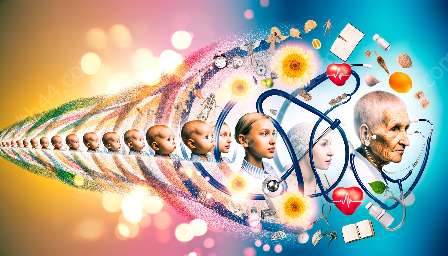Gender and sexuality development is a complex and multifaceted aspect of human psychology that intertwines with various stages of lifespan development. It plays a crucial role in shaping individuals' identities and affects their physical, mental, and social well-being. This in-depth exploration of gender and sexuality development aims to shed light on its significance from a health education and medical training perspective.
The Role of Gender and Sexuality in Lifespan Development
Gender and sexuality are integral components of an individual's identity, and their development is influenced by numerous factors, including biology, environment, culture, and personal experiences. Understanding how gender and sexuality evolve throughout different stages of life is essential for health educators and medical professionals to provide comprehensive care and support.
Early Childhood and Gender Identity Formation
During early childhood, children start to develop a sense of gender identity, which refers to their understanding of being male, female, or non-binary. This process is influenced by social interactions, familial expectations, and exposure to societal gender norms. Health educators and medical professionals play a critical role in promoting gender inclusivity and providing support for children who may experience gender identity challenges.
Adolescence and Sexual Orientation Exploration
Adolescence is a period marked by significant exploration of sexual orientation and romantic attractions. Individuals may experience various degrees of fluidity in their sexual orientation and gender identity during this stage. Health education programs should address the diverse spectrum of sexual orientations and provide accurate information to support the well-being of adolescents navigating their sexual identities.
Adulthood and Gender Expression
As individuals transition into adulthood, they continue to evolve in their gender expression, which encompasses outward manifestations of their gender identity. This may involve changes in clothing, behavior, and societal roles. Medical professionals need to be attentive to the unique healthcare needs of individuals expressing their gender in non-traditional ways and provide inclusive and respectful care.
The Intersection of Gender and Sexuality with Health Education and Medical Training
Gender and sexuality development intertwines with health education and medical training in various ways, influencing the delivery of healthcare, patient experiences, and individuals' overall health outcomes. It is crucial for health educators and medical professionals to be well-versed in the intricacies of gender and sexuality development to provide competent and compassionate care.
Promoting Inclusive Health Education
In the realm of health education, promoting inclusive practices involves addressing gender and sexuality in curricula, fostering an understanding of diverse identities, and dismantling stereotypes and biases. This approach ensures that future healthcare professionals are equipped to provide non-discriminatory and patient-centered care to individuals across the gender and sexuality spectrum.
Enhancing Cultural Competence in Medical Training
Medical training programs must integrate cultural competence that encompasses gender and sexuality diversity. This includes training on using inclusive language, understanding the unique healthcare needs of LGBTQ+ individuals, and providing respectful and affirming care. By prioritizing cultural competence, medical professionals can build trust with patients and offer tailored healthcare solutions.
Addressing Health Disparities and Intersectionality
Gender and sexuality development also intersects with various health disparities, as individuals facing discrimination based on their gender identity or sexual orientation may experience barriers to accessing quality healthcare. Health educators and medical professionals should be equipped to recognize these disparities and advocate for equitable healthcare policies and services that address the specific needs of marginalized communities.
Conclusion
The exploration of gender and sexuality development within the context of lifespan development, health education, and medical training underscores the profound impact of these factors on individuals' well-being. By acknowledging the diverse and evolving nature of gender and sexuality, health educators and medical professionals can foster an inclusive healthcare environment and contribute to the holistic development of individuals across the lifespan.


